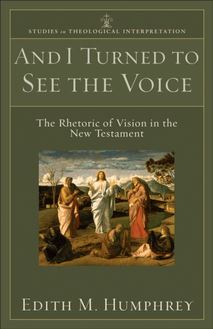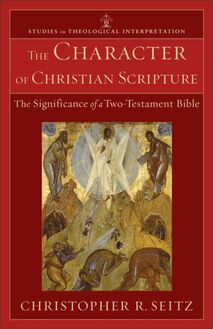-
 Univers
Univers
-
 Ebooks
Ebooks
-
 Livres audio
Livres audio
-
 Presse
Presse
-
 Podcasts
Podcasts
-
 BD
BD
-
 Documents
Documents
-
- Cours
- Révisions
- Ressources pédagogiques
- Sciences de l’éducation
- Manuels scolaires
- Langues
- Travaux de classe
- Annales de BEP
- Etudes supérieures
- Maternelle et primaire
- Fiches de lecture
- Orientation scolaire
- Méthodologie
- Corrigés de devoir
- Annales d’examens et concours
- Annales du bac
- Annales du brevet
- Rapports de stage
La lecture à portée de main
Vous pourrez modifier la taille du texte de cet ouvrage
Découvre YouScribe en t'inscrivant gratuitement
Je m'inscrisAnd I Turned to See the Voice (Studies in Theological Interpretation) , livre ebook
Découvre YouScribe en t'inscrivant gratuitement
Je m'inscrisEn savoir plus
Vous pourrez modifier la taille du texte de cet ouvrage
En savoir plus

Description
Informations
| Publié par | Baker Publishing Group |
| Date de parution | 01 novembre 2007 |
| Nombre de lectures | 0 |
| EAN13 | 9781441242044 |
| Langue | English |
Informations légales : prix de location à la page 0,0691€. Cette information est donnée uniquement à titre indicatif conformément à la législation en vigueur.
Extrait
STUDIES in THEOLOGICAL INTERPRETATION
Series Editors
Craig G. Bartholomew Redeemer University College
Joel B. Green Fuller Theological Seminary
Christopher R. Seitz Wycliffe College, University of Toronto
Editorial Advisory Board
Gary Anderson University of Notre Dame
Markus Bockmuehl University of Oxford
Richard Hays Duke University Divinity School
Christine Pohl Asbury Theological Seminary
Eleonore Stump Saint Louis University
Anthony Thiselton University of Nottingham University of Chester
Marianne Meye Thompson Fuller Theological Seminary
Kevin Vanhoozer Trinity Evangelical Divinity School
John Webster University of Aberdeen
Jim Kinney Baker Academic
© 2007 by Edith M. Humphrey
Published by Baker Academic
a division of Baker Publishing Group
P.O. Box 6287, Grand Rapids, MI 49516-6287
www.bakeracademic.com
Ebook edition created 2013
All rights reserved. No part of this publication may be reproduced, stored in a retrieval system, or transmitted in any form or by any means—for example, electronic, photocopy, recording—without the prior written permission of the publisher. The only exception is brief quotations in printed reviews.
ISBN 978-1-4412-4204-4
Library of Congress Cataloging-in-Publication Data is on file at the Library of Congress, Washington, DC.
Where the author does not provide an original translation, Scripture quotations are from the Revised Standard Version of the Bible, copyright 1952 [2nd edition, 1971] by the Division of Christian Education of the National Council of the Churches of Christ in the United States of America. Used by permission. All rights reserved.
To Debra and Fr. Sean, who have helped me to see more.
C ONTENTS
Cover
Title Page
Copyright Page
Dedication
Series Preface
Preface
Introduction: Vision-Report as Artifact and Polemic
1. Making a Case: Word Clinched by Vision
(2 Corinthians 12:1–10; Acts 7:54–60)
2. Directing the Argument: The Power of Repetition within Narrative
(Acts 10:1–11:18; 9:1–25; 22:1–22; 26:1–24)
3. Shaping the Narrative: Embryonic and Strategic Visions
(Luke 10:17–24; 1:5–2:40; Matthew 17:1–8; Mark 9:2–8; Luke 9:28–36)
4. Firing the Imagination: Visions with Embedded Propositions
(Revelation 11:15–12:17; 1:12–3:22; 4:1–5:14)
Conclusion: Toward a Hermeneutics of Imagination and Sympathy
Notes
Bibliography
Index of Authors
Index of Scripture and Other Ancient Writings
Subject Index
S ERIES P REFACE
A s a discipline, formal biblical studies is in a period of reassessment and upheaval. Concern with historical origins and the development of the biblical materials has in many places been replaced by an emphasis on the reader and the meanings supplied by present contexts and communities. The Studies in Theological Interpretation series will seek to appreciate the constructive theological contribution made by Scripture when it is read in its canonical richness. Of necessity, this includes historical evaluation while remaining open to renewed inquiry into what is meant by history and historical study in relation to Christian Scripture. This also means that the history of the reception of biblical texts—a discipline frequently neglected or rejected altogether—will receive fresh attention and respect. In sum, the series is dedicated to the pursuit of constructive theological interpretation of the church’s inheritance of prophets and apostles in a manner that is open to reconnection with the long history of theological reading in the church. The primary emphasis is on the constructive theological contribution of the biblical texts themselves.
New commentary series have sprung up to address these and similar concerns. It is important to complement this development with brief, focused, and closely argued studies that evaluate the hermeneutical, historical, and theological dimensions of scriptural reading and interpretation for our times. In the light of shifting and often divergent methodologies, the series will encourage studies in theological interpretation that model clear and consistent methods in the pursuit of theologically engaging readings.
An earlier day saw the publication of a series of short monographs and compact treatments in the area of biblical theology that went by the name Studies in Biblical Theology. The length and focus of the contributions were salutary features and worthy of emulation. Today, however, we find no consensus regarding the nature of biblical theology, and this is a good reason to explore anew what competent theological reflection on Christian Scripture might look like in our day. To this end, the present series, Studies in Theological Interpretation, is dedicated.
P REFACE
T his book brings together several long-standing interests: a fascination for vision-reports in various kinds of ancient literature, a concern for different approaches in the literary and rhetorical study of texts, and a dawning awareness of the transformative embrace of the Scriptures. In the first case, I am a bit of a voyeur, having never had an unambiguous vision of my own to report (or do luminous dreams count?). In the second, I have been involved for decades, from undergraduate years in discussion with other Victoria College students immediately following the stimulating lectures of Northrop Frye, through to my recent interchanges with Society of Biblical Literature and Canadian Society of Biblical Studies colleagues involved in literary, sociological, and rhetorical analyses of the Scriptures. Finally, I have been drawn by a deepening attachment to the Great Tradition of the church, and emboldened by the growing acceptance of engaged reading and a renewed biblical theology in the academy.
My quest for a fruitful way of reading vision-reports has extended over the past thirteen years, and has been matched by a parallel pilgrimage in the “nonacademic” areas of my life. Some portions of this book have thus appeared in other forms, as I have worked through an approach to reading that seeks to do justice to the literary, rhetorical, and theological aspects of these numinous (and luminous) texts. Other passages are reworked forms of unpublished papers that I have offered in various venues, and newly written analyses done specifically for this monograph based on the insights that have emerged during this time of inquiry. The commentary on the transfiguration episodes, developed from my popular study Ecstasy and Intimacy, is marked by the hermeneutic recommended by Georges Florovsky and Theodore G. Stylianopoulos to “integrate ‘what is new and what is old’” (Matt. 13:52). [1] Section one and section three contain reconsidered and reframed material on Paul, on Stephen, and on Jesus’ vision of Satan’s fall drawn from my first foray into this arena published in the 1993 issue of ARC : The Journal of the Faculty of Religious Studies, McGill University . [2] Section two includes a revised form of an essay on Acts 10–11 that appeared two years later in Semeia [3] at the encouragement of my colleagues Robert Culley and Ian Henderson. I am particularly grateful for conversations with Ian Henderson in these early stages of inquiry. Section four includes and expands the entire argument from the 1999 essay included in the groundbreaking volume Vision and Persuasion . [4] I have received permission to reprint this latter piece, for which I give thanks to Chalice Press as well as to the meticulous editing of Greg Bloomquist and Greg Carey, whose work was invaluable in the first appearance of that essay. My thanks are also due to my generous colleagues Dale Allison and Steven Tuell, who read a draft of this book and offered invaluable suggestions.
While I have spent many beguiling and invigorating hours with colleagues who concentrate on the field of rhetorical studies, I do not consider myself a specialist in this area, but one whose main interests, literary and theological, have been greatly enriched by it. Those immersed in classical rhetoric will be all too aware of my novitiate status in their field, but they may be interested in what emerges from a cross-fertilization of strategies and disciplines in the course of the following study. I offer these readings and reflections largely with the New Testament student and analyst in mind, in hope that my findings concerning the literary and rhetorical subtleties of the biblical vision-report will engage them just as I have been engrossed by the issues emerging from these texts. I have tried, where at all possible, to define and explain technical terms to aid the nonspecialist. Likewise, all Greek is translated. For the most part, where the New Testament is cited, I have done my own translation, although occasionally I have used the older RSV, since its formal quality seems more suited to the hieratic quality of vision than the NRSV.
What I have written here is also offered in hope of encouraging a conversation that is increasingly choate and that must be fostered, though with care. It concerns how we can negotiate scholarly discussion and debate in an academic environment that is at once more pluralist and less dispassionate than what was the norm in an earlier generation. My plea for a hermeneutics of receptivity comes from my own passion for reading and especially for the Scriptures. It is clear that such an approach will be more congenial to those readers who, like me, have discovered that knowledge is not merely perspectival, nor found wholly in a system of thought, but is found in a Person. I would hope, however, that any who value the human imagination might be convinced to go at least part of the way with me and allow themselves to be affected by these astounding texts. For to read is to be changed.
Feast of Saints Peter and Paul, 2006
I NTRODUCTION
Vision-Report as Artifact and Polemic
R eaders of the New Testament have frequently overlooked its vision-reports, thinking of these as mostly confined to that eccentric last book of
-
 Univers
Univers
-
 Ebooks
Ebooks
-
 Livres audio
Livres audio
-
 Presse
Presse
-
 Podcasts
Podcasts
-
 BD
BD
-
 Documents
Documents
-
Jeunesse
-
Littérature
-
Ressources professionnelles
-
Santé et bien-être
-
Savoirs
-
Education
-
Loisirs et hobbies
-
Art, musique et cinéma
-
Actualité et débat de société
-
Jeunesse
-
Littérature
-
Ressources professionnelles
-
Santé et bien-être
-
Savoirs
-
Education
-
Loisirs et hobbies
-
Art, musique et cinéma
-
Actualité et débat de société
-
Actualités
-
Lifestyle
-
Presse jeunesse
-
Presse professionnelle
-
Pratique
-
Presse sportive
-
Presse internationale
-
Culture & Médias
-
Action et Aventures
-
Science-fiction et Fantasy
-
Société
-
Jeunesse
-
Littérature
-
Ressources professionnelles
-
Santé et bien-être
-
Savoirs
-
Education
-
Loisirs et hobbies
-
Art, musique et cinéma
-
Actualité et débat de société
- Cours
- Révisions
- Ressources pédagogiques
- Sciences de l’éducation
- Manuels scolaires
- Langues
- Travaux de classe
- Annales de BEP
- Etudes supérieures
- Maternelle et primaire
- Fiches de lecture
- Orientation scolaire
- Méthodologie
- Corrigés de devoir
- Annales d’examens et concours
- Annales du bac
- Annales du brevet
- Rapports de stage












